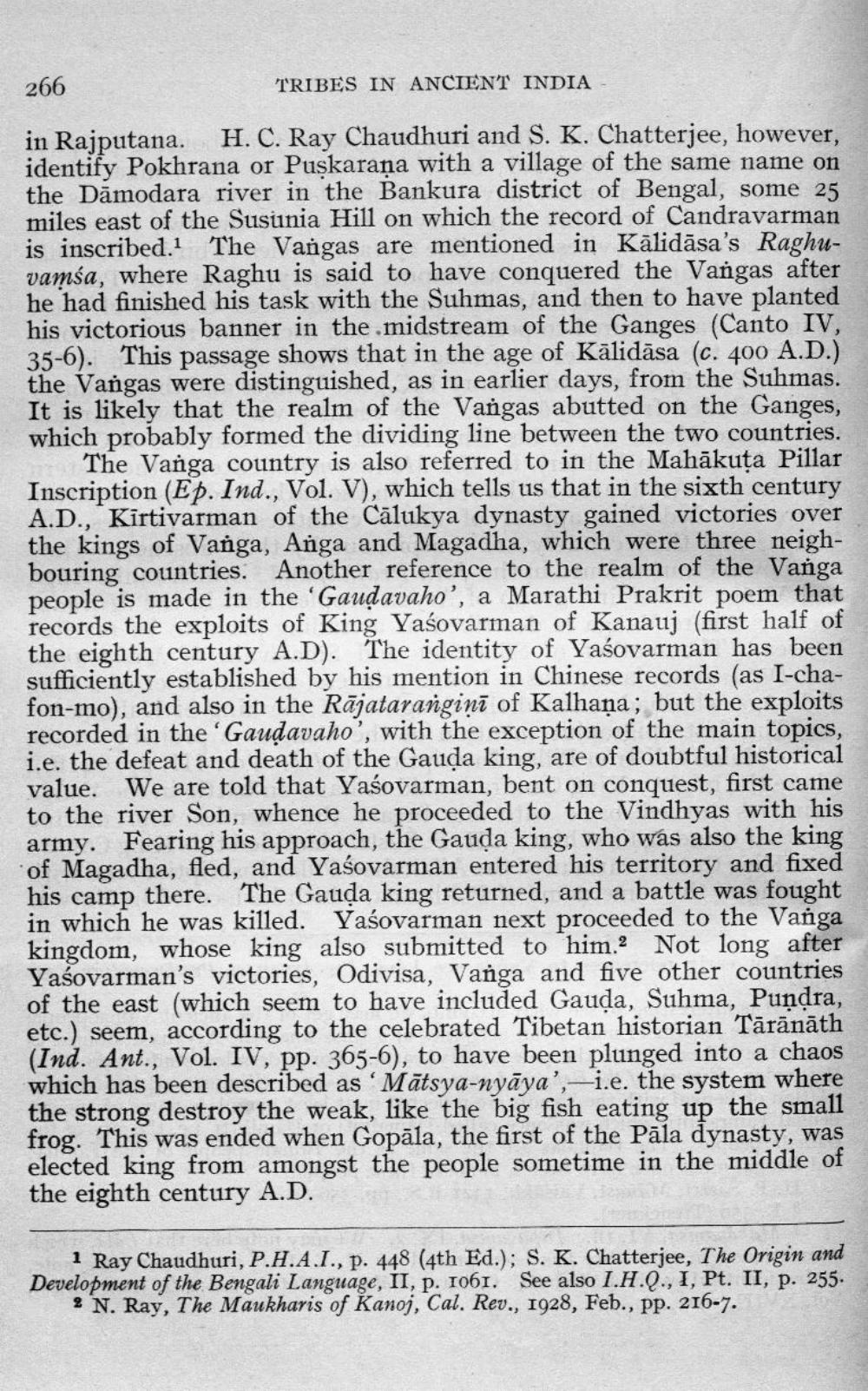________________
266
TRIBES IN ANCIENT INDIA
in Rajputana. H.C. Ray Chaudhuri and S. K. Chatterjee, however, identify Pokhrana or Puskaraṇa with a village of the same name on the Dāmodara river in the Bankura district of Bengal, some 25 miles east of the Susunia Hill on which the record of Candravarman is inscribed. The Vargas are mentioned in Kālidāsa's Raghuvamśa, where Raghu is said to have conquered the Vangas after he had finished his task with the Suhmas, and then to have planted his victorious banner in the midstream of the Ganges (Canto IV, 35-6). This passage shows that in the age of Kālidāsa (c. 400 A.D.) the Vangas were distinguished. as in earlier days, from the Suhmas. It is likely that the realm of the Vangas abutted on the Ganges, which probably formed the dividing line between the two countries.
The Vanga country is also referred to in the Mahākuta Pillar Inscription (Ep. Ind., Vol. V), which tells us that in the sixth century A.D., Kirtivarman of the Cālukya dynasty gained victories over the kings of Vanga, Anga and Magadha, which were three neighbouring countries. Another reference to the realm of the Vanga people is made in the 'Gaudavaho', a Marathi Prakrit poem that records the exploits of King Yaśovarman of Kanauj (first half of the eighth century A.D). The identity of Yaśovarman has been sufficiently established by his mention in Chinese records (as I-chafon-mo), and also in the Rājataranginī of Kalhaņa; but the exploits recorded in the 'Gaudavaho', with the exception of the main topics, i.e. the defeat and death of the Gauda king, are of doubtful historical value. We are told that Yaśovarman, bent on conquest, first came to the river Son, whence he proceeded to the Vindhyas with his army. Fearing his approach, the Gauda king. who was also the king of Magadha, fled, and Yasovarman entered his territory and fixed his camp there. The Gauda king returned, and a battle was fought in which he was killed. Yaśovarman next proceeded to the Vanga kingdom, whose king also submitted to him.2 Not long after Yasovarman's victories, Odivisa, Vanga and five other countries of the east (which seem to have included Gauda, Suhma, Pundra, etc.) seem, according to the celebrated Tibetan historian Tārānāth (Ind. Ant., Vol. IV, pp. 365-6), to have been plunged into a chaos which has been described as “Mātsya-nyāya',-i.e. the system where the strong destroy the weak, like the big fish eating up the small frog. This was ended when Gopāla, the first of the Pāla dynasty, was elected king from amongst the people sometime in the middle of the eighth century A.D.
1 Ray Chaudhuri, P.H.A.I., p. 448 (4th Ed.); S. K. Chatterjee, The Origin and Development of the Bengali Language, II, p. 1061. See also I.H.Q., I, Pt. II, p. 255.
2 N. Ray, The Maukharis of Kanoj, Cal. Rev., 1928, Feb., pp. 216-7.




